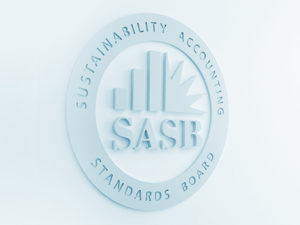
Jeffrey Hales, Phd, Chair of the SASB Standards Board
A year ago, I wrote about SASB’s laser-like focus on financial materiality and drive to align with other frameworks to facilitate global implementation, and about the value that SASB places on market input. In that post, I emphasized the importance of SASB developing standards through an iterative process that helps us strengthen our standards as market issues, understanding, and best practices evolve.
Since late 2018, when SASB’s standards were launched, we have been gathering additional market input and observing how companies implement our standards. This has allowed us to identify areas of opportunity and key priorities, based on what we’ve seen in and heard from the market.
We want to ensure that our standards are as useful and as implementable as possible, so we look for opportunities to make the standards more decision-useful for investors and cost-effective for companies. When we identify an opportunity to do so, that’s where we want to focus our efforts, while always doing our work in a transparent way and with opportunities for public comment.
The launch of the standards in 2018 marked a new phase of standard-setting activity at SASB. However, this iterative, market-informed approach to standard setting has always been in SASB’s DNA. In SASB’s Rules of Procedure document, which was written in 2017 to ensure the clarity, robustness, and integrity of our due process, SASB explains that it “carries out its process for maintenance and improvement of the Standards on a recurring three-year cycle. However, [it] will address more urgent issues outside this regular schedule, as it deems necessary or useful.” In July of 2019, we recognised that the most effective way to maintain and improve our standards was to identify and focus on priority areas, rather than automatically revisiting topics or industries even in the absence market input. We decided to eliminate the fixed three-year cycle of maintenance in favour of more targeted opportunities for improvement.
How SASB’s project-based model will work
We’ve developed a process to help ensure that standard setting efforts will be efficient and effective. The process begins with SASB staff conducting preliminary research on issues or potential issues that they feel warrant further, focused investigation. As this research advances, SASB staff and the Standards Board work together to identify research that may help to reshape at least one SASB standard; this research will become the basis of a Standard-Setting project. All Standard-Setting projects will follow SASB’s comprehensive process, including continual research and consultation, circulation of exposure drafts, comment periods, and careful review. Ultimately, the Standards Board will vote, based on this input, whether or not to approve an update to the standards.
Project pipeline
At a public session of our Standards Board meeting in September, SASB staff presented the first round of project proposals to the Standards Board. In the coming months, SASB will work on governance projects to update the organization’s Rules of Procedure and Conceptual Framework documents (which detail the principles, objectives, assumptions, and definitions that guide SASB’s thinking and approach to standard-setting). We also added a research project to reassess the scope and shape of human capital across sectors and industries.
These projects are an exciting and promising start and represent only a few of the many projects to come. We are eager to enter this new stage of standard-setting activity, and we look forward to continuing to share our thoughts and updates with you and to incorporating your feedback into our work!
Jeffrey Hales is the Charles T. Zlatkovich Centennial Professor of Accounting at the University of Texas at Austin and the Chair of the Sustainability Accounting Standards Board.


